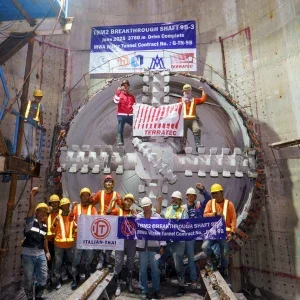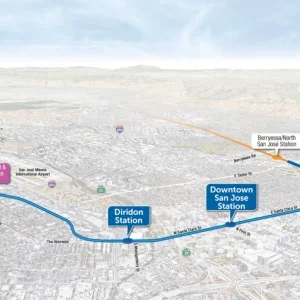Contractors were finally due to receive tender documents as T&TI went to press for the design and construction of the Kowloon Canton Railway Corporation‘s (KCRC) US$1.15bn Kowloon southern rail link in Hong Kong.
Tenders for the largest tunnelling project in Hong Kong were due to be issued in September, but KCRC delayed issuing the documents while it discussed building an extra station with Wharf Holdings, a local property developer. The Highways Department, which oversees rail projects on behalf of the Hong Kong government, also stepped in and asked for a review of tunnelling methods on one of the railway sections following complaints by another developer with property investments in the area.
The review, being done by City University, is still being carried out, but insiders said it is unlikely to change KCRC’s plans to build part of the tunnel using cut and cover techniques. The property company, New World Development, had hoped the tunnel, under Salisbury Road and close to the waterfront, could be built by TBM to limit disruption to a nearby hotel. Business in the area had already been badly affected by the construction of the KCRC’s East Tsim Sha Tsui rail tunnel, which opened in October, even though it had been built using cut and cover.
“New World had been through a difficult three years, now they are facing similar difficulties with the Kowloon southern link,” said one source. But he added the complex network of underground utilities along Salisbury Road meant it was impossible to use TBMs there.
Overall plans call for the construction of about 2.6km of tunnel under Salisbury and Canton roads in the heart of Kowloon’s Tsim Sha Tsui tourist district. The link will connect KCRC’s East and West Rail networks.
Tenders were due to be issued by early December for return in early February. Work is expected to start next year with completion scheduled by 2009.
Among the contractors which have sought prequalification are Obayashi Corporation with Halcrow Asia and Robert Benaim as design consultants, Nishimatsu with Ove Arup as designer, Balfour Beatty, Kumagai Gumi and Australian firms Leighton and John Holland with Mott Connell and Meinhardt as design consultants and Dragages of France.







